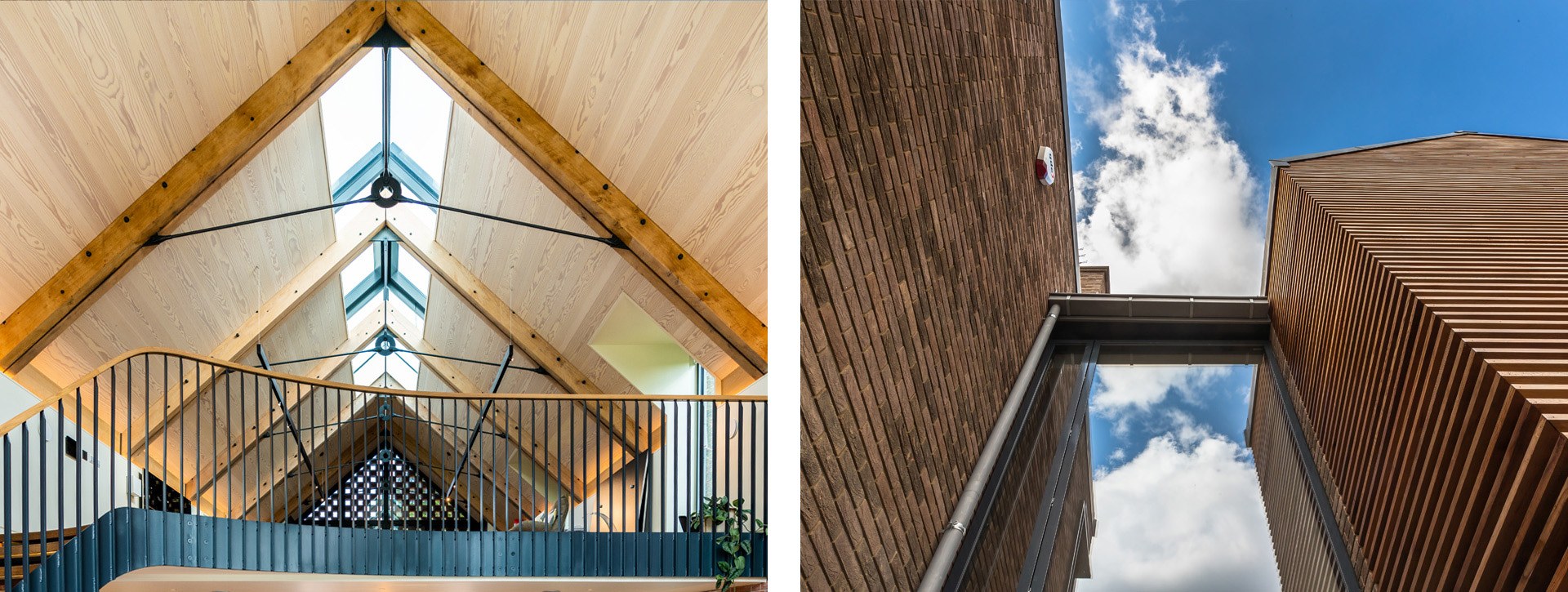
Straw, sticks and bricks…
I’ll huff and I’ll puff and I’ll get right behind those three little pigs and applaud their building choices, says Dorcas George-Jones.

Innovation in house building has come an awfully long way since a certain three little pigs pitched their wits against an evil wolf. When this particular fable was written, at the end of the 1800s, Queen Victoria was on the throne, social mobility was on the move and Bram Stoker was creating Dracula. In the original tale of The Three Little Pigs (all of them boys), the first two little pigs foolishly did not construct their dwellings to building regulations. The evil wolf blew their houses down and gobbled them up. The third little pig (who was far cleverer and more hardworking than his siblings) took the challenge of house building rather more seriously and the wolf was unable to oust him. When the wolf finally managed to storm his battlements by clambering down his chimney, in an ironic twist, the little pig caught the wolf in a boiling vat and gobbled him all up.
It’s 2024 and nowadays, in the more sensitive iterations of this story, the first two little pigs manage to escape unharmed to the safety of the third little pig’s house. Furthermore, the wolf only gets scalded before it scarpers, leaving our three little pigs living happily ever after. The wolf is taught a valuable lesson in not eating meat and all of the protagonists are agender. Times have changed somewhat.
Changing society norms and politics aside however (I really don’t want to get into that just days before an election), I am here to suggest that if we are going to rewrite historical tales in the interests of social niceties, we should also get our building facts straight. Perhaps our future first little pig, who built a house from straw, should be applauded for an innovative and sustainable project? Perhaps they all should?
Straw bale construction is now actually a thing. Straw, which requires almost no energy to grow (basically just daylight) is essentially a waste product so its sustainability credentials are very high. Once the grain has been harvested, what is left gets turned into a totally biodegradable straw bale – which also happens to be a great insulator. In straw bale construction, the bales are stacked (usually in a brick bond format) on a raised footing or foundation. The bales require capillary breaks (or moisture barriers) between them and their supporting beams, and they are typically tied together using pins or timber, but sometimes wire mesh. They can be lime plastered or earth/clay rendered.

As for our second little pig, who built a house from sticks, timber construction has long been a thing! It is, arguably, the world’s oldest building material. Archaeologists have uncovered evidence that timber was being used by early humans more than 1.5 million years ago. Thanks to our conservation and planning laws, we still have scores of buildings that date back to Medieval times; and remember that Venice was built in the 14th Century on timber stilts or piles. Timber is an incredible building material that can and does stand the test of time. The dictionary definition of timber is ‘wood prepared for use in building and carpentry’. OK – so our second little pig used sticks rather than timber – but that really wasn’t so far off the mark. A little more patience would have seen the sticks grow larger and then be turned into timber. Throughout the 1900s, steel and concrete made a massive impact on timber as a construction material, but the sustainable revolution has turned the tide again. The renewable, carbon sequestration qualities of the humble but mighty tree have won out. Technological advancements have, inevitably, meant that timber and its usage has evolved dramatically and the range of timber products that can be used in construction today is simply staggering.

Bricks too have an ancient history; the first known bricks were made from mud and date back to 7,000 BC. Sometimes referred to as artificial stone, bricks are immensely strong and long lasting; our third little pig had done the research! The Romans introduced brick making to Britain but their manufacture died out with the Romans too, though these early bricks were recycled and reused. The earliest imported bricks, post Roman times, can be traced back to the early 13th Century but it was only after the Great Fire of London, in 1666, that bricks became more common place. It wasn’t, however, until The Industrial Revolution of the 1800s that the mass production of bricks arrived, making them a far more readily available alternative to stone. This fits nicely with the timing of the creation of our three little pigs and explains why the author praised the brick as the superior building material. Again, the range of bricks available is immense!
Straw, sticks and bricks, of course, barely scrape the surface when it comes to the range of building materials on offer, but more about that another time…

The girls hit the course!
In early June, Victoria Evans head of our London office, hosted a beginners Golf Camp at St George’s Hill Golf Club in Surrey. Victoria has been playing golf for about twelve years and a member at St George’s Hill for two years. Times are definitely changing but there are still not enough women in the industry out on the greens. Seven ladies, some of whom had never swung a club before, joined her from: SHH Architects, BTP, Ascot Design, Crestron Light Directions, Chelmer Mouldings and Adair.
It was a super fun day, networking away from the office in a relaxed and fun environment. The Club Pro began with the basics of grip and swing and, by the end of the morning all of the group were hitting a seven iron, a hybrid, a driver and a pitch – they then went on to play a hole! This was followed by lunch and champagne on the beautiful terrace overlooking the 18th green.
The feedback to this event has been really positive; so much so that we will be running another similar event soon – and I for one have my hand up for an invite! Networking on the golf course is a standard property sector event – and it is high time that we girls joined in more! Watch this space…

Meet the Team – this month – Jon Veale

This month, meet Jon, one of the Directors of our Cotswold office, based in Cirencester. Jon is a fully qualified Quantity Surveyor and is well known and respected for meeting deadlines and delivering the highest quality on prestigious projects in and around Gloucestershire. What he doesn’t know about groundworks and building is not worth knowing and, when you combine this knowledge with his financial brain, he is a great asset to our team.
When he’s not on site or with his head in spreadsheet, Jon is usually on the sidelines of a football pitch. He is a committed family man, husband to Claire and father to three boys – all of whom are also happily worshipers of the beautiful game. His eldest son (who is now leaving school and following his father into the building industry) still plays for the local team of which Jon has been Chairman until this year, and his two youngest play for Cheltenham Town Academy. That really is a lot of time on the sidelines! The family have also recently moved and, you guessed it, they have bought a project; isn’t it funny how people in the construction industry all do that? So, when Jon does get a spare minute, his home project spreadsheet is keeping him busy too.
Image Credits
Three little piggies thanks to Rowley Farm Holidays
Straw photo by Federico Faccipieri on Unsplash
Sticks photo by Andrew Hall on Unsplash
Bricks Photo by Zubair Hamid on Unsplash
